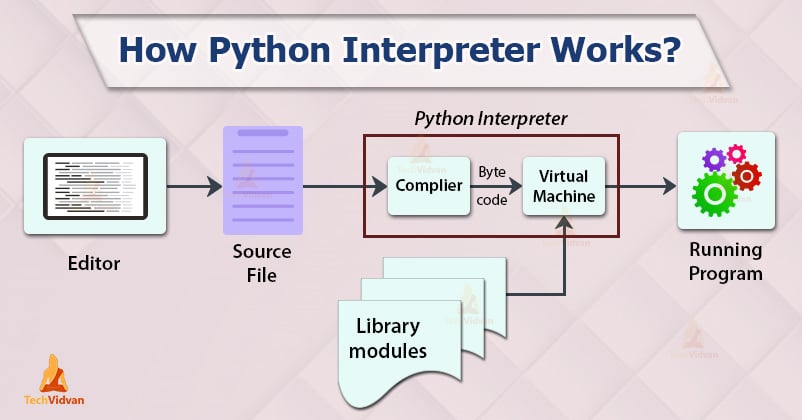The Features of Python Interpreter

The Python interpreter is a key component of the Python programming language, responsible for executing Python code.
Here are some features of the Python interpreter:
-
Interactive Mode:
- Python provides an interactive mode that allows users to enter Python commands and see the results immediately.
- This is useful for testing small pieces of code, exploring the language, and debugging.
-
Dynamic Typing:
- Python is dynamically typed, meaning that the type of a variable is interpreted at runtime.
- Variables can change their type as the program runs.
-
Automatic Memory Management (Garbage Collection):
- Python uses a built-in garbage collector to automatically reclaim memory occupied by objects that are no longer in use.
- This helps simplify memory management for developers.
-
Extensibility:
- Python can be extended by writing modules in C or C++.
- This allows developers to integrate existing C/C++ code into Python or optimize performance-critical parts of their programs.
-
Portability:
- Python code is usually platform-independent, and Python interpreters are available for various operating systems.
- This portability makes it easy to write code that can run on different platforms without modification.
-
Standard Library:
- Python comes with a comprehensive standard library that provides modules and packages for a wide range of tasks, from file I/O to networking to data manipulation.
- This extensive library reduces the need for external dependencies in many cases.
-
Error Detection and Handling:
- The Python interpreter provides detailed error messages that help developers identify and fix issues in their code.
- Exception handling allows programmers to catch and handle errors gracefully.
-
Embeddability:
- Python can be embedded within applications written in other languages like C and C++.
- This allows developers to use Python for scripting and automation in larger software systems.
-
Versatility and Ease of Use:
- Python is known for its simple and readable syntax, making it easy for beginners to learn and write code.
- It supports multiple programming paradigms, including procedural, object-oriented, and functional programming.
-
Interoperability:
- Python can interface with other languages, making it suitable for integration into existing software systems.
- This interoperability is facilitated through tools like ctypes and libraries like Cython.
-
Community and Documentation:
- The Python community is active and supportive, contributing to an extensive collection of documentation, tutorials, and third-party libraries.
- This community-driven aspect enhances the learning experience and development process.
These features make the Python interpreter a powerful tool for developing a wide variety of applications, from simple scripts to complex software systems.
Thank you.
